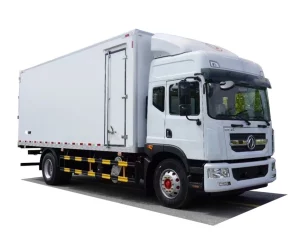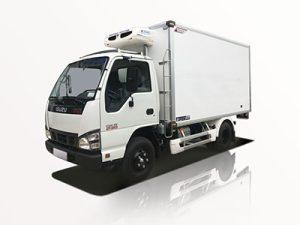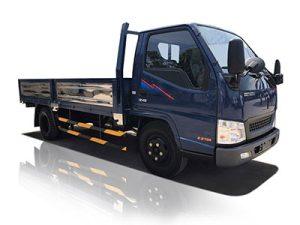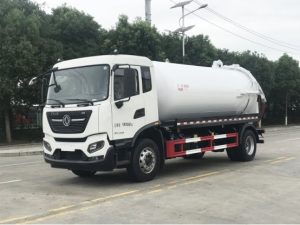Monday to Saturday - 8:00 -17:30
Understanding Milk Tanker Trucks: The Backbone of Dairy Transportation
Milk tanker trucks play a vital role in the dairy industry, transporting liquid milk from farms to processing plants. This article delves into the various aspects of milk tanker trucks—covering their design, types, operational mechanisms, maintenance, regulations, and more. With the dairy industry thriving globally, understanding these vehicles is essential for anyone interested in logistics, agriculture, or food production.
What is a Milk Tanker Truck?
A milk tanker truck is a specialized vehicle designed for the transportation of liquid milk. These trucks have unique features that differentiate them from standard trucks, including insulated tanks to maintain temperature, special pumping systems for loading and unloading, and food-grade materials to ensure product safety.
Types of Milk Tanker Trucks
1. Standard Milk Tanker Trucks
Standard milk tanker trucks are the most common type used in the dairy industry. They typically have a capacity ranging from 5,000 to 10,000 liters. These trucks are equipped with insulated tanks and refrigeration systems to keep milk at the appropriate temperature during transportation.
2. Refrigerated Milk Tanker Trucks
Refrigerated milk tanker trucks maintain low temperatures throughout the entire journey. These trucks are crucial for transporting milk over long distances, as they prevent spoilage and ensure the milk remains fresh until it reaches the processing plant.
3. Vacuum Milk Tanker Trucks
Vacuum milk tanker trucks use a vacuum pump system for loading milk from farms. This method is efficient and minimizes spillage, ensuring that the milk arrives at its destination in optimal condition.
Key Components of Milk Tanker Trucks
1. Milk Storage Tank
The storage tank is the most significant component of a milk tanker truck. It is typically made of stainless steel to prevent contamination and is insulated to maintain the milk’s temperature.
2. Pumping System
A pumping system facilitates the loading and unloading of milk. Most trucks use centrifugal pumps or diaphragm pumps to ensure a high transfer rate without damaging the milk.
3. Insulation and Refrigeration
Insulation is essential to keep the milk at a safe temperature. Some trucks are equipped with refrigeration units that can actively cool the milk, ensuring it remains fresh during transport.
Operational Mechanisms of Milk Tanker Trucks
Loading and Unloading
The loading process involves connecting the truck to a vacuum line or a gravity-fed system at the dairy farm. Once the truck is full, the unloading process is initiated at the processing plant, where the milk is transferred into storage tanks.
Temperature Control
Maintaining the right temperature is critical. Milk should ideally be transported at temperatures below 4°C (39°F). Trucks are monitored with temperature sensors to ensure compliance with health guidelines.
Maintaining Milk Quality During Transport
1. Pre-Transport Checks
Before transporting milk, it is crucial to ensure that the tank and all equipment are clean and sanitized. Any residue can jeopardize the quality of the milk.
2. Temperature Monitoring
Advanced milk tanker trucks are equipped with digital temperature monitoring systems. This technology helps keep track of the milk temperature during transit.
3. Regular Cleaning and Maintenance
Following each transport, milk tanker trucks should be thoroughly cleaned to prevent contamination. Regular maintenance checks of the truck’s pumping and refrigeration systems are essential.
Regulations and Standards for Milk Tanker Trucks
1. Food Safety Compliance
Milk tankers must comply with food safety standards set forth by local and international regulations. These include maintaining hygiene during transport and ensuring the materials used in the construction of the truck meet safety guidelines.
2. Licensing and Inspections
Milk tanker trucks require specific licenses and must undergo regular inspections to ensure they meet the standards set by regulatory bodies. This includes checks on weigh stations and inspection points along their routes.
Challenges Faced by Milk Tanker Operators
1. Temperature Control Issues
Maintaining the proper temperature during transport can be challenging, especially during long-distance journeys. A malfunctioning refrigeration system can have dire consequences for milk quality.
2. Regulatory Compliance
Keeping up with changing regulations can be a challenge for operators. Meeting these requirements is vital to avoiding penalties and ensuring product quality.
The Future of Milk Tanker Trucks
1. Technological Advancements
Emerging technologies such as IoT (Internet of Things) can enhance operational efficiency through real-time tracking and monitoring of milk quality. Sensors can provide data on temperature, load weight, and route optimization.
2. Sustainability Initiatives
The dairy industry is increasingly focusing on sustainability. Trucks equipped with alternative fuel systems or electric-operated features can help reduce carbon footprints and promote greener practices.
Practical Tips for Milk Tanker Operation
1. Choose Clean Transport Routes
Operators should plan routes that avoid heavy traffic and pollution to maintain milk quality. Choosing less congested roads can minimize delays and preserve freshness.
2. Schedule Regular Maintenance
Regular maintenance checks not only prolong the life of the truck but also ensure that everything functions correctly during operation. Establish a routine maintenance schedule to prevent unexpected breakdowns.
3. Stay Informed on Regulations
Operators should regularly review and stay updated on any changes in local and national regulations regarding food transportation to ensure compliance and avoid potential penalties.
FAQ Section
1. How much milk can a milk tanker truck carry?
A typical milk tanker truck can carry between 5,000 to 10,000 liters of milk, depending on its design and purpose.
2. What materials are used in milk tanker trucks?
Milk tanker trucks are usually made of food-grade stainless steel, as it is durable and resistant to corrosion, ensuring the milk remains uncontaminated.
3. How do milk tanker trucks maintain milk temperature during transportation?
Milk tanker trucks maintain temperature through insulation and, in many cases, an active refrigeration unit that keeps the milk at or below 4°C (39°F).
4. What are the cleaning requirements for milk tanker trucks?
Milk tanker trucks must be thoroughly cleaned and sanitized after each load. This includes washing the interior of the tank and ensuring that all components are free from residues.
5. How often do milk tanker trucks need maintenance?
Regular maintenance should be performed according to a set schedule, typically every few thousand miles or after a certain number of trips, and should include checks on pumping systems, refrigeration units, and overall vehicle health.
6. Are there specific licenses required to operate milk tanker trucks?
Yes, operators of milk tanker trucks must obtain specialized licenses that comply with local transport and food safety regulations. These licenses ensure the operator has the necessary training and knowledge to handle food-grade products safely.









